
Figure 1
On April 24th, many parts of Illinois were affected by freezing temperatures for an extended period of time. There were also areas that continued to have frost advisories after this date. In the previous blog, Early Soybean Planting in April: The Why and the How, we reviewed cold inhibition can occur in soybeans when cold water (< 40 F) is imbibed in the first 24 hours. In addition, once the soybean plant is emerged, its growing point is above ground. Temperatures <28 F for more than 4 hours can be lethal to the growing point. Many soybeans had not emerged yet; however for those that had, we were very concerned about soybean survival after multiple or extended periods of cold temperatures.
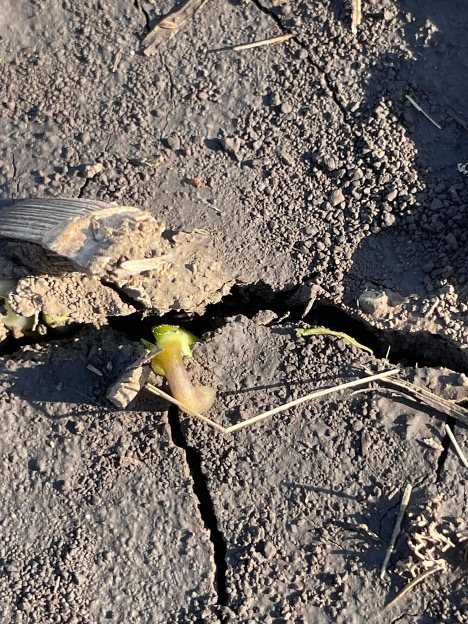
Figure 2
In some cases, like in Figure 1, the cotyledons can buffer the growing points, especially if they have not expanded yet.
In other situations, soybeans planted during the early part of the second week of April were just emerging. I was concerned that the soybean hypocotyl, often called the “neck” and attached to the cotyledon, was injured by freezing temperatures (Figure 2). I learned from an extension specialist on Twitter that at this stage, the soybean hypocotyl is the most sensitive to the cold. If the soybean hypocotyl is completely injured, that soybean seedling WILL NOT be considered a survivor during a future stand count.
On April 28th, I visited two early planted soybean fields in Canton, Illinois and Bellflower, Illinois. (Figure 3)
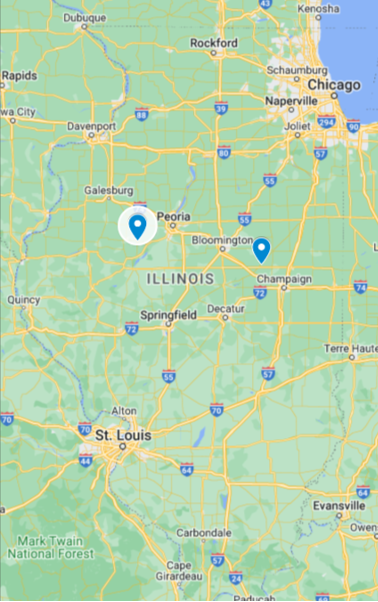
Figure 3
The soybean field near Canton, IL was planted on April 12th and mostly not emerged. It’s possible that the soybeans that had emerged had their hypocotyls affected by the cold temperatures. After a quick jaunt around the field, most of the soybeans still had not emerged. Those that had emerged did have their hypocotyls exposed during the frost, but they had mostly recovered. I did find one seedling that had a brown and almost withered hypocotyl that most likely would not make it through the fight (Figure 4).
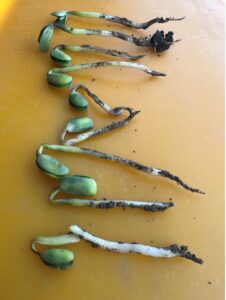
Figure 4
The next field I visited near Bellflower, Illinois did not fare so well regarding the recent cold injury. There appeared to be about 30,000 viable plants per acre after a stand count. We were able to document the various stages of frost injury from worst to best in a picture (Figure 5). There were clearly some “in the middle” soybeans that remained somewhat of a green color, but with a dead main growing point, did not appear to show any other signs of regrowth.
When this cold event occurred, I observed the dry, darker soils did not provide the “radiant” heat to help keep the soybeans warm like in years past. Another observation was that the further along the growth stage of the soybean, the more at risk they were during the freeze. Early planting dates or more heat units are called out as one reason for more soybean growth above ground, and with a growing point above ground, these soybeans had a greater risk to get zapped by the frost. Planting date is not the only factor for soybeans to be at a later growth stage. Another example of soybeans being in different growth stages was seen in this field (Figure 6). Many of the soybeans had not emerged yet in the lighter areas of this field; therefore, the soybeans were protected below ground against the cold temperatures. In this same field, more soybeans had begun to emerge in the darker areas of the field; therefore, these soybeans were more at risk of being injured by the cold temperatures.
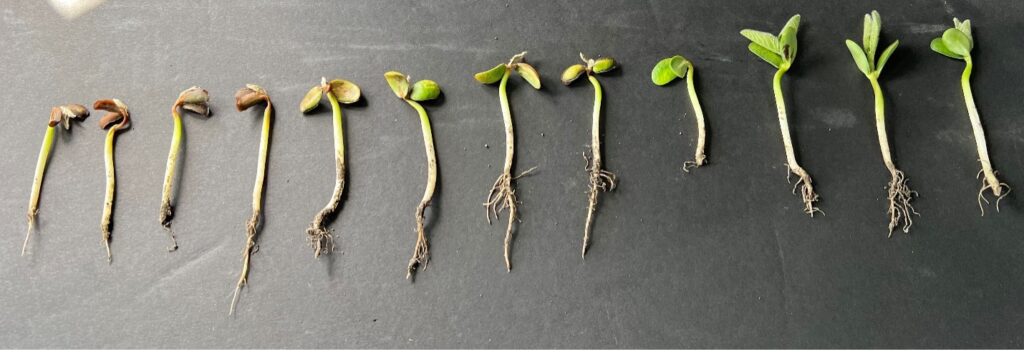
Figure 5
Another clear observation was that seeding depth mattered. In the picture below (Figure 7), the top 2 plants were planted at a shallower seedling depth and much further along than the lower 2 seedlings. In this specific case, planting date, heat units, and darker soils could also have a hand in the accelerated growth stage. However, there is no denying that the bottom 2 plants that were planted 2 inches deep were further behind and below ground, and protected during the cold snap.
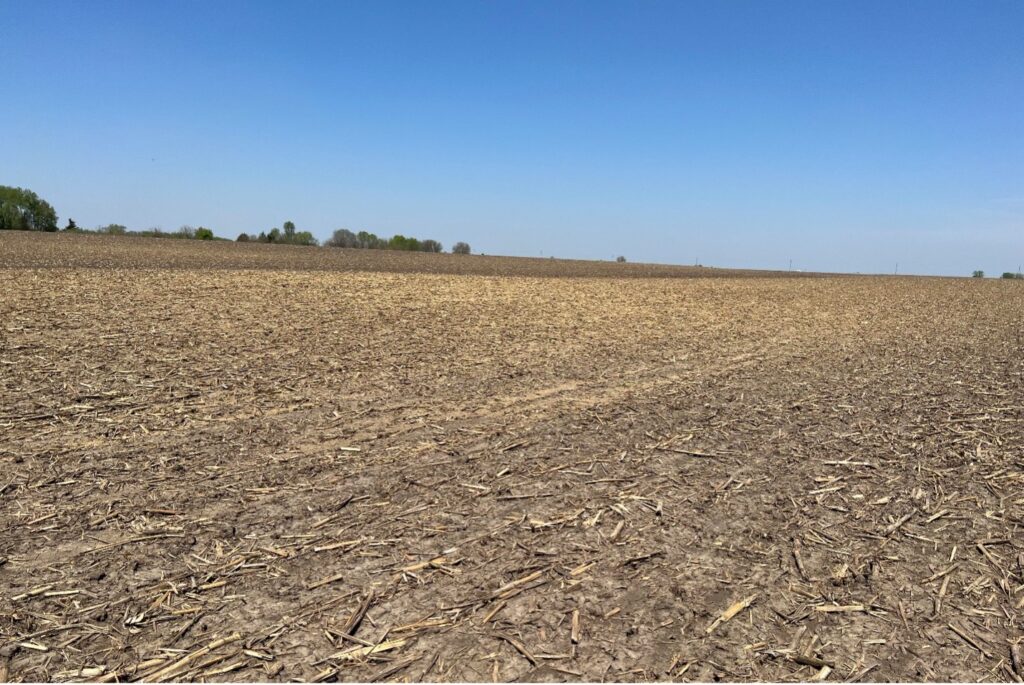
Figure 6
The last step will be for us to continue to learn if there is a next time. Kris Ehler, ILSoyAdvidor Soy Envoy, has invited us to watch and gain insights from the soybean field located near Bellflower, Illinois (Figure 8). We hope to continue to observe cold injured soybeans throughout the growing season and compare areas in this field that were left alone, replanted into the existing stand, or completely torn up, then replanted. Stay tuned for updates.

Figure 7

Figure 8


 and then
and then